Moustafa Rahal
RIS-Enabled NLoS Near-Field Joint Position and Velocity Estimation under User Mobility
Dec 15, 2023



Abstract:In the context of single-base station (BS) non-line-of-sight (NLoS) single-epoch localization with the aid of a reflective reconfigurable intelligent surface (RIS), this paper introduces a novel three-step algorithm that jointly estimates the position and velocity of a mobile user equipment (UE), while compensating for the Doppler effects observed in near-field (NF) at the RIS elements over the short transmission duration of a sequence of downlink (DL) pilot symbols. First, a low-complexity initialization procedure is proposed, relying in part on far-field (FF) approximation and a static user assumption. Then, an alternating optimization procedure is designed to iteratively refine the velocity and position estimates, as well as the channel gain. The refinement routines leverage small angle approximations and the linearization of the RIS response, accounting for both NF and mobility effects. We evaluate the performance of the proposed algorithm through extensive simulations under diverse operating conditions with regard to signal-to-noise ratio (SNR), UE mobility, uncontrolled multipath and RIS-UE distance. Our results reveal remarkable performance improvements over the state-of-the-art (SoTA) mobility-agnostic benchmark algorithm, while indicating convergence of the proposed algorithm to respective theoretical bounds on position and velocity estimation.
RIS-aided Positioning Experiments based on mmWave Indoor Channel Measurements
Jun 18, 2023



Abstract:Reconfigurable Intelligent Surfaces (RISs) are announced as a truly transformative technology, capable of smartly shaping wireless environments to optimize next-generation communication networks. Among their numerous foreseen applications, Reflective RISs (RRISs) have been shown theoretically beneficial not only to enable wireless localization through controlled multipath in situations where conventional systems would fail (e.g., with too few available base stations (BSs) and/or under radio blockages) but also to locally boost accuracy on demand (typically, in regions close to the surface). In this paper, leveraging a dedicated frequency-domain mmWave indoor channel sounding campaign, we present the first experimental evidences of such benefits, by emulating offline simple RIS-aided single-BS positioning scenarios including line-of-sight (LoS) and non-line-of-sight (NLoS), single-RIS and multi-RIS, and multiple user equipment (UE) locations, also by considering various combinations of estimated multipath parameters (e.g., delays, Angle of Departure (AoD) or gains) as inputs to basic Least Squares (LS) solvers. Despite their simplicity, these preliminary proof-of-concept validations show concretely how and when RIS-reflected paths could contribute to enhance localization performance.
Performance of RIS-Aided Nearfield Localization under Beams Approximation from Real Hardware Characterization
Mar 27, 2023Abstract:The technology of reconfigurable intelligent surfaces (RIS) has been showing promising potential in a variety of applications relying on Beyond-5G networks. Reconfigurable intelligent surface (RIS) can indeed provide fine channel flexibility to improve communication quality of service (QoS) or restore localization capabilities in challenging operating conditions, while conventional approaches fail (e.g., due to insufficient infrastructure, severe radio obstructions). In this paper, we tackle a general low-complexity approach for optimizing the precoders that control such reflective surfaces under hardware constraints. More specifically, it allows the approximation of any desired beam pattern using a pre-characterized look-up table of feasible complex reflection coefficients for each RIS element. The proposed method is first evaluated in terms of beam fidelity for several examples of RIS hardware prototypes. Then, by means of a theoretical bounds analysis, we examine the impact of RIS beams approximation on the performance of near-field downlink positioning in non-line-of-sight conditions, while considering several RIS phase profiles (incl. directional, random and localization-optimal designs). Simulation results in a canonical scenario illustrate how the introduced RIS profile optimization scheme can reliably produce the desired RIS beams under realistic hardware limitations. They also highlight its sensitivity to both the underlying hardware characteristics and the required beam kinds in relation to the specificity of RIS-aided localization applications.
Constrained RIS Phase Profile Optimization and Time Sharing for Near-field Localization
Mar 14, 2022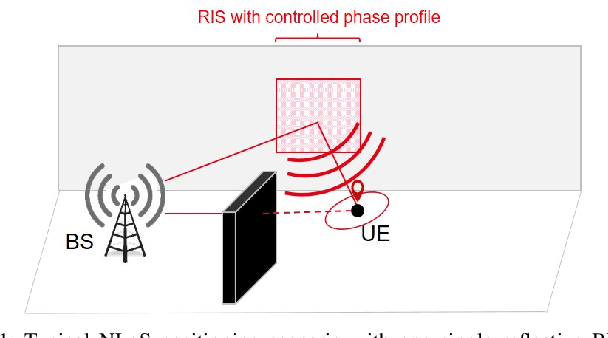
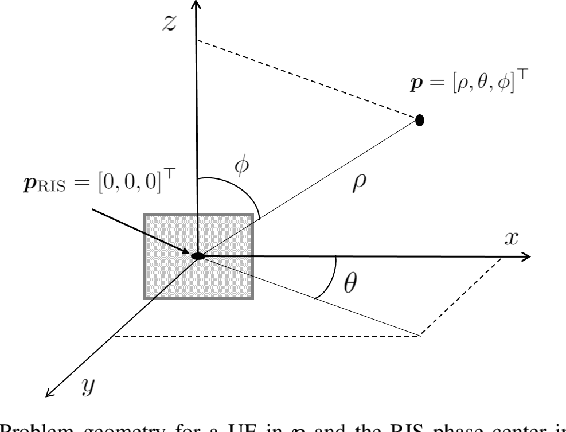
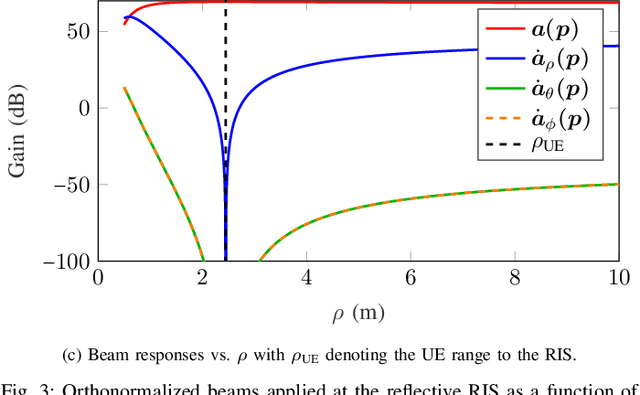
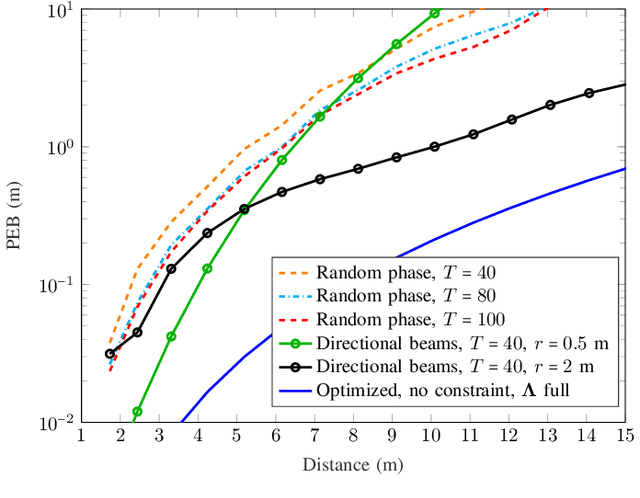
Abstract:The rising concept of reconfigurable intelligent surface (RIS) has promising potential for Beyond 5G localization applications. We herein investigate different phase profile designs at a reflective RIS, which enable non-line-of-sight positioning in nearfield from downlink single antenna transmissions. We first derive the closed-form expressions of the corresponding Fisher information matrix (FIM) and position error bound (PEB). Accordingly, we then propose a new localization-optimal phase profile design, assuming prior knowledge of the user equipment location. Numerical simulations in a canonical scenario show that our proposal outperforms conventional RIS random and directional beam codebook designs in terms of PEB. We also illustrate the four beams allocated at the RIS (i.e., one directional beam, along with its derivatives with respect to space dimensions) and show how their relative weights according to the optimal solution can be practically implemented through time sharing (i.e., considering feasible beams sequentially).
Arbitrary Beam Pattern Approximation via RISs with Measured Element Responses
Mar 14, 2022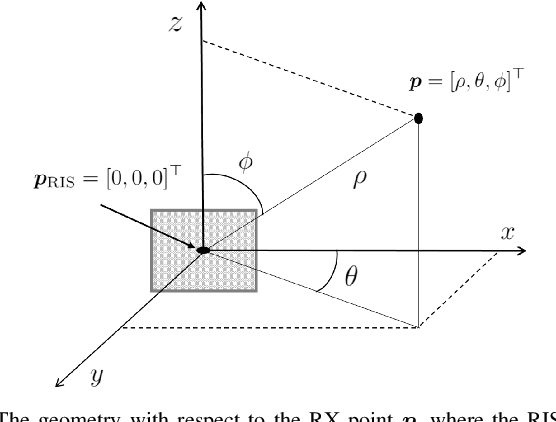
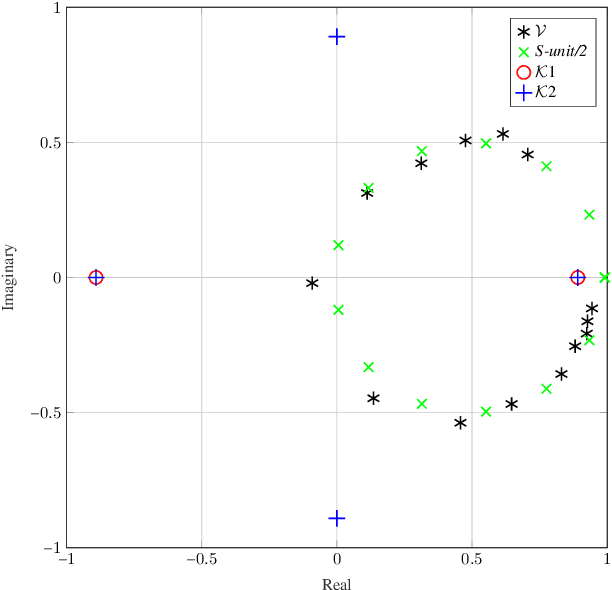
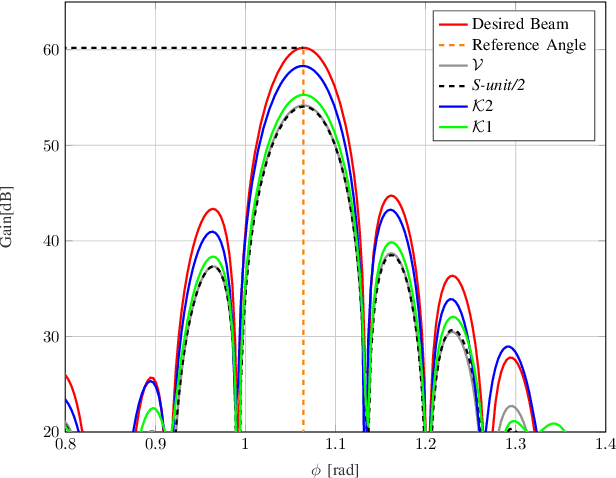
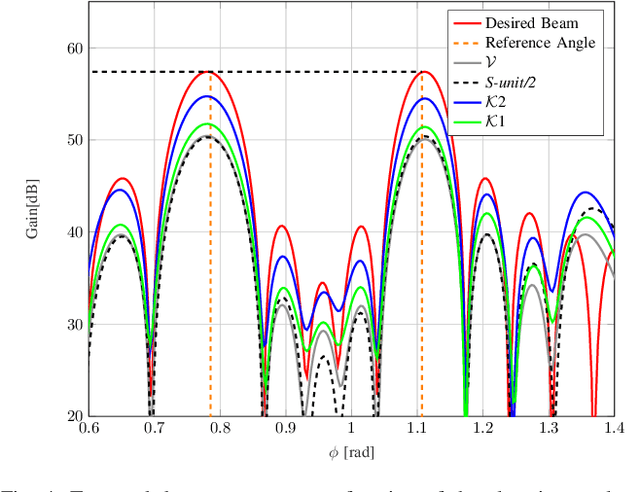
Abstract:Smart radio environments (SREs) are seen as a key rising concept of next generation wireless networks, where propagation channels between transmitters and receivers are purposely controlled. One promising approach to achieve such channel flexibility relies on semipassive reflective Reconfigurable intelligent surfaces (RISs), which can shape the bouncing multipath signals for enhancing communication quality of service, making localization feasible in adverse operating conditions, or reducing unwanted electromagnetic emissions. This paper introduces a generic framework that aims at optimizing the end-to-end precoder controlled by RISs, so that arbitrary beam patterns can be generated, given a predefined lookup table of RIS element-wise complex reflection coefficients. This method is validated and illustrated for different targeted beam patterns in both the far-field and the near-field regimes, while considering the prior characterization of real-life RIS hardware prototypes. These results show how, and to which extent, RIS configuration optimization can approximate the desired beams under realistic hardware limitations and low-complexity implementation practicability, or conversely, which RIS elements' lookup tables would be more suitable. The latter can provide useful guidelines for future RIS hardware designs.
RIS-Enabled Localization Continuity Under Near-Field Conditions
Sep 24, 2021
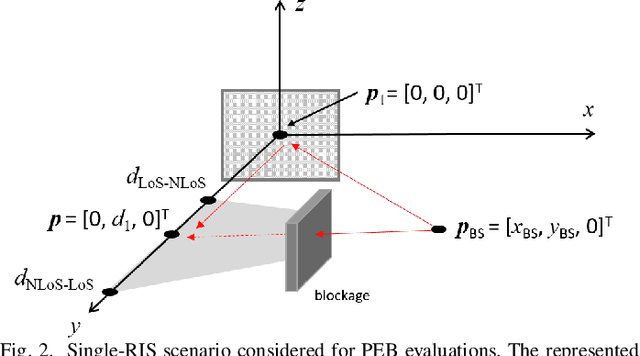
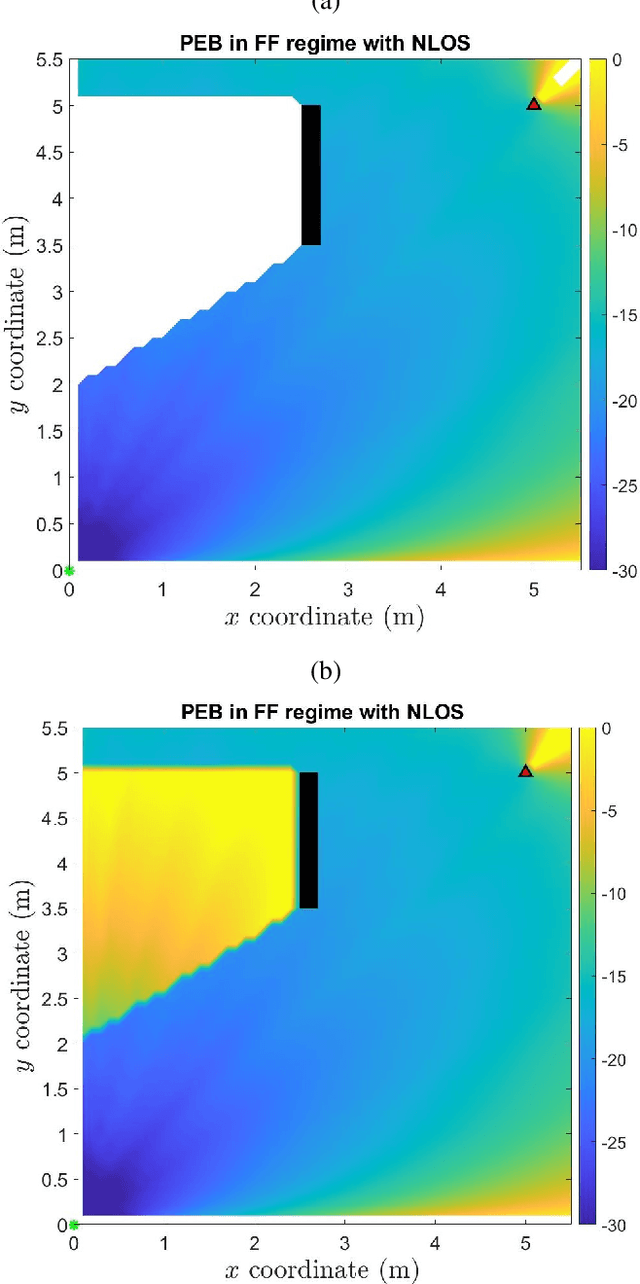
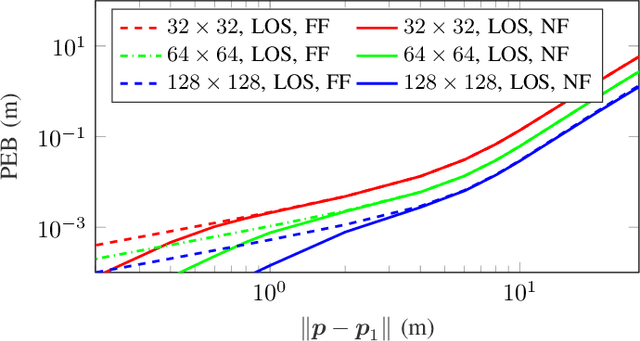
Abstract:Reconfigurable intelligent surfaces (RISs) have the potential to enable user localization in scenarios where traditional approaches fail. Building on prior work in single-antenna RIS-enabled localization, we investigate the potential to exploit wavefront curvature in geometric near-field conditions. Via a Fisher information analysis, we demonstrate that while near-field improves localization accuracy mostly at short distances when the line-of-sight (LoS) path is present, it could still provide reasonable performance when this path is blocked by relying on a single RIS reflection.
 Add to Chrome
Add to Chrome Add to Firefox
Add to Firefox Add to Edge
Add to Edge